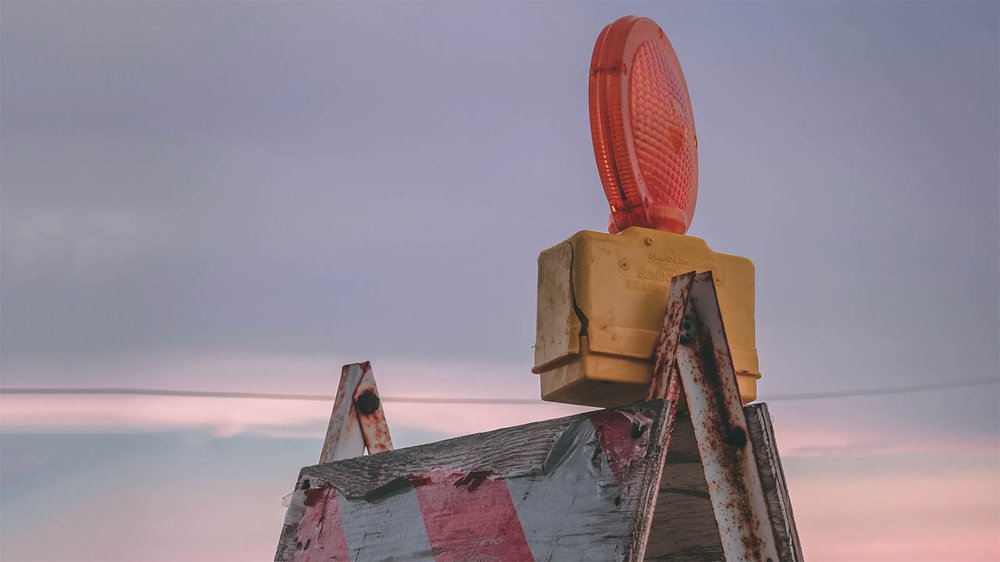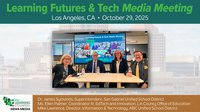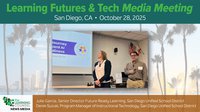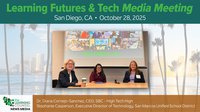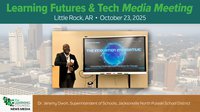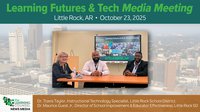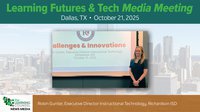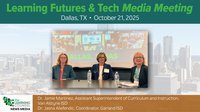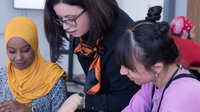The Learning Counsel conducts Digital Transition Discussion events regionally, in cities across America. At a recent event in our nation’s capital, an informal roundtable discussion was convened to identify the barriers teachers and administrators are facing as they move their districts along a continuum of digital transformation.
“What we saw in every city this year was change on a scale we've never seen before,” said LeiLani Cauthen, publisher and CEO of the Learning Counsel as she addressed the group. “California is literally burning to the ground. They're losing kids at a dizzying pace through massive attrition. But they also set up state level charters and they have this big pension issue. Places like San Diego, we love them to death, but they've got 1.3 billion coming in and they've got 1.3 billion going out for pensions alone.
“Those are the things that are happening,” said Cauthen. “And then you've got this out of sync-ness with Americans’ expectations today. Learners can get the whole world on their cell phones and somebody to arrive with a box of pizza within 10 minutes or Amazon can put almost anything on their doorsteps within an hour. Then, in contrast, you have a problem doing things in the old ways at school, when people need something else. Also, I would contend that kids today need more human interaction than ever before and we're doing the opposite. What does it mean for educators in the trenches, and what will we come up? As a next step, let’s identify the barriers so we can make the necessary changes.”
One of the larger obstacles, and one that isn’t generally thought of as an impediment to the digital transition is observations of teachers by the administration. Tracy Brown, Instructional Technology Specialist at Anne Arundel County Public Schools explains, “I work mostly with middle school teachers. But one of the things that I hear from teachers that is a barrier for them using technology in their classrooms is observations.
“They get observed by different people at different times during the year,” said Brown. “A lot of teachers tell me, I know people on my administrative team or in my content area who view technology use as being too chaotic. Their idea of a good lesson is everybody's facing the front of the room. Everybody has their pencil in their hand, they're open to the right page on the book. And if they come in and observe you and it doesn't look like that, then you get dinged, with comments like ‘I don't even know what those kids were doing for that 20 minutes.’ The barrier is, at that higher level, people are far-removed from the classroom but are still somehow in charge of that classroom and are not always on board with this. The highest level of integration should be students creating and curating. They (the observers) want to see the kids with their nose in a textbook, writing notes, staring at something projected on the screen and then you get a giant check and an A-plus that you had a great lesson today.
“The observations are supposed to be built for further coaching, but no one takes a coaching opportunity as being positive,” said Brown. “I mean, when I sit down and say, ‘I'm going to coach you,’ the expectation is that the feedback will be negative, even punitive; ‘you know those students shouldn't be doing that. Let's do this, or you should be talking about these courses.’ The teacher automatically is crushed because they've spent all their time doing the lesson plans, getting prepared, making the best lesson possible, and all of a sudden, you're crushed because that wasn't the way you envisioned it. Maybe a child was talking off topic, but it's so much better than me standing there delivering something where they're all off topic. They're all thinking about something else or what they wanted to do at the park that afternoon. Having a conversation about it and having a conversation about something other than the exact lesson topic is also social emotional learning that can be learned in classroom.”
Changing the nature of observations is something that can fixed, and it will be another hurdle eliminated in the race towards a learning environment that uses technology to do the heavy lifting so teachers can do what they do best, being human. If you are an administrator who uses observations in the classroom, take stock in the process. Why are observations being done, how are they conducted and by whom? And most importantly, what is the desired outcome? Classroom observation, when done correctly, is a very valuable tool. However, if done incorrectly and perceived as being punitive, it can be a waste of time and resources and worse, it can have the opposite effect as intended.
Stay tuned to the Learning Counsel in 2020. We’ll continue to shed light on the obstacles, both big and small, that are keeping us from making meaningful changes in our schools and districts to create true Expo Centers of Learning for our children.
About the Author
Charles Sosnik is an education journalist and editor and serves as Editor in Chief at the Learning Counsel. Charles uses his deep roots in the education community to add context to the education narrative. He is a frequent writer and columnist for some of the most influential media in education, including The Learning Counsel, EdNews Daily, edCircuit and EdTech Digest. Charles is unabashedly Southern and likes to say he is an editor by trade and Southern by the Grace of God.

